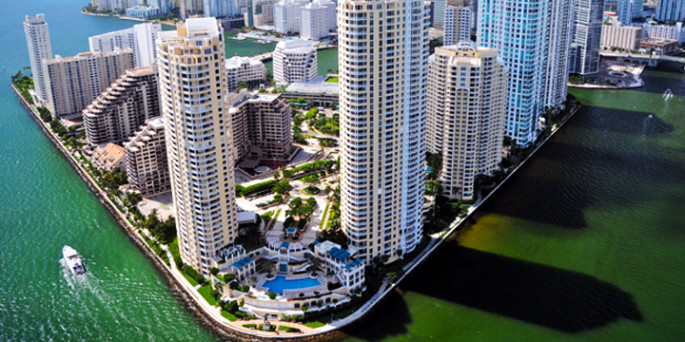
My two Miamis
MIAMI – “Twenty-six dollars,” said the lady inside the booth, bored look on her face. “That’s a lot of money for three hours of parking,” I complained. She shrugged; I handed over the money. I had already spent more than $200 to take my daughter to see a matinee of the Broadway show “Wicked” at the Arsht Center.
It is just one example of the two Miamis where I live. It’s a precarious situation I see growing rapidly here.
Miami has become a city where the wealthy love to come and enjoy the sun, the fun, its many amenities, and, of course, its beautiful people. A place where the rich don’t even blink when they pay ten, twenty, thirty million dollars for the newest condo designed by who knows who, or for the latest restoration of the mansion where Al Capone used to live. We even have a boat ride where you pay someone to take you around Biscayne Bay and point out where Gloria and Emilio Estefan live; or, “there, over there… that’s where Oprah spends one weekend a year here,” the promoter yells to the gawkers. “She bought it for a gazillion dollars,” he tells them. Giving great importance to the gazillion. And Oprah, of course.
Sadly, the difference between the two Miamis keeps expanding practically on a weekly basis. Read this week’s Conexión Miami, for example. We offer the case of a property in what was once a run-down area of the city, now in the process of gentrification, that was bought for $300,000 in 2004, and recently sold for almost $30 million. A 10,000 percent increase… in a decade.
Then we have a Miami commissioner who wants to pass a law to get rid of the homeless. The heartless son of a bitch has disguised it as an “anti camping” bill. And he’s doing it to please the beautiful people who he considers can’t stand the smell of the “dregs” on the street in front of their 20 million dollar homes. I suppose it’s also the millionaires who keep him in business – and in power. Or is it one and the same for this guy?
And while two and three thousand dollar dinners, where expensive wine and champagne flows, is commonplace in South Beach, Coral Gables and downtown Miami, this area also sports a poverty rate that tops 20 percent, according to the Miami-Dade County Dept. of Regulatory and Economic Resources. That’s more than 530,000 residents in poverty in the Miami area, and increasing.
These numbers become even more dramatic when you consider that nearly one in three of the poor are under the age of 18, while one of every seven is 65 or older. In fact, almost 14 percent of our children live below 50 percent of the poverty line. Some people refer to this as “deep poverty.” I just call it a tragedy.
Miami’s Gini coefficient, a measure of income inequality, is the third highest among U.S. cities after Atlanta and New Orleans. It’s higher than in Buenos Aires and Rio de Janeiro and mirrors Mexico City’s level, according to a recent report by Bloomberg business.
Joe Greer, a Miami doctor who has worked for decades treating the homeless and uninsured, may have referred to our situation best. He told the Bloomberg writer, “Miami isn’t the gateway to Latin America; Miami has the same economic demographics as Latin America.”
And what of the often-cited middle class in Miami? I look at myself for that answer. The more I drive around my city, the more I realize that the more things “prosper” and develop, the more I will probably be left out. I am coming to the realization that soon I won’t be able to afford where I live.
I bought my condo in 1989. I paid $90,000 at the time. Great view. The beach is my backyard. I felt extremely lucky.
In 2015, three blocks north of where I live on Collins Avenue, they are finishing a penthouse apartment that takes up the last three floors of the building, has an infinity pool in the sky, and contains 18,000 square feet of air-conditioned space. It’s a castle in the sky and sold for $60 million.
You know what this expensive development will do to my real estate taxes in the not too distant future?
And allow me to emphasize again, I’m one of the lucky ones.
I’ve lived in Miami since 1960. It’s my home and I love it. But these days I find myself looking through websites that tell you of less expensive places to retire.
Miami has become, borrowing the title of the Charles Dickens classic, a tale of two cities. Actually, if you look around, it’s what’s happening in too many parts of our world.
The solution, interestingly enough, will be left up to nature. I say this because with the sea rising, and Florida scheduled to be one of the first places to sink, no amount of money can deal with a house – and a city – under water.

